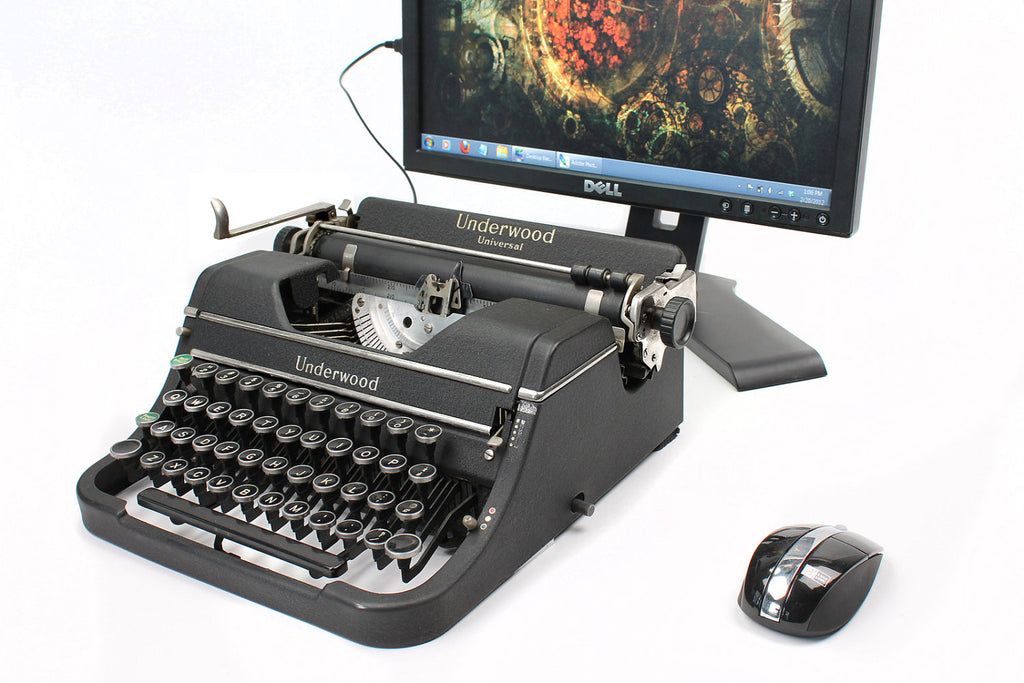
The type bars connecting the key and the letter plate hung in a cycle beneath the paper. The popular theory states that Sholes had to redesign the keyboard in response to the mechanical failings of early typewriters, which were slightly different from the models most often seen in thrift stores and flea markets. Why change things? This is where the origin of QWERTY gets a little foggy.Įxperimental Sholes & Glidden typewriters circa 1873

After all, anyone who used the keyboard would know immediately where to find each letter hunting would be reduced, pecking would be increased. The team surely assumed it would be the most efficient arrangement. The earliest typewriter keyboard resembled a piano and was built with an alphabetical arrangement of 28 keys. Soulé, James Densmore, and Carlos Glidden, and first patented in 1868. One such invention was an early typewriter, which he developed with Samuel W.

#A typewriter keyboard free#
In the 1860s, a politician, printer, newspaper man, and amateur inventor in Milwaukee by the name of Christopher Latham Sholes spent his free time developing various machines to make his businesses more efficient. It turns out that there is a lot of myth and misinformation surrounding the development of QWERTY, but these various theories all seem to agree that the QWERTY layout was developed along with, and inextricably linked to, early typewriters. Unlike KALQ, it couldn’t have been designed to accommodate a specific typing technique because, well, the idea of typing –touch typing, at least– hadn’t been invented yet. It’s an interesting and by all accounts commercially viable design that got me thinking about the rationale behind the QWERTY keyboard. The new keyboard, known as KALQ, is designed specifically for thumb-typing on today’s smart phones and tablets. A recent article in Smithsonian’s news blog, Smart News, described an innovative new keyboard system that proposes a more efficient alternative to the ubiquitous “universal” keyboard best known as QWERTY – named for the first six letters in the top row of keys. Some minor adjustments with an Exacto knife helped ensure clean lines.What came first: the typist or the keyboard? The answer depends on the keyboard. We cut ours in the middle very carefully and increased the overlap. You may need to make some, which can easily be done with the outside edges and leftover sticky vinyl inside the larger letters. Use a variety of 1", 2" and 3" symbols, depending on the keyboard you chose to recreate. Use 1” letters for the Shift Key and Shift Lock keys. Use 2” letters for the numbers and symbols. Use 3” letters for the main letters on the keyboard and punctuation. Don’t press them down until you’re sure that they're in the right place. Carefully place each letter into the center of the circle.

Find a way to easily judge the center of the circle, whether through a guide or the lines on your cutting mat.Ģ. Gather the following materials: Vinyl letters, black circles you just cut, scissors, Exacto knifeġ. You’ll want to be as precise as possible on placement for these. Black scrapbook paper (or thick cardstock): Īffiliate Notification We are a participant in the Amazon Services LLC Associates Program, an affiliate advertising program designed to provide a means for us to earn fees by linking to and affiliated sites.įor our keyboard, we needed three sizes of vinyl letters.


 0 kommentar(er)
0 kommentar(er)
